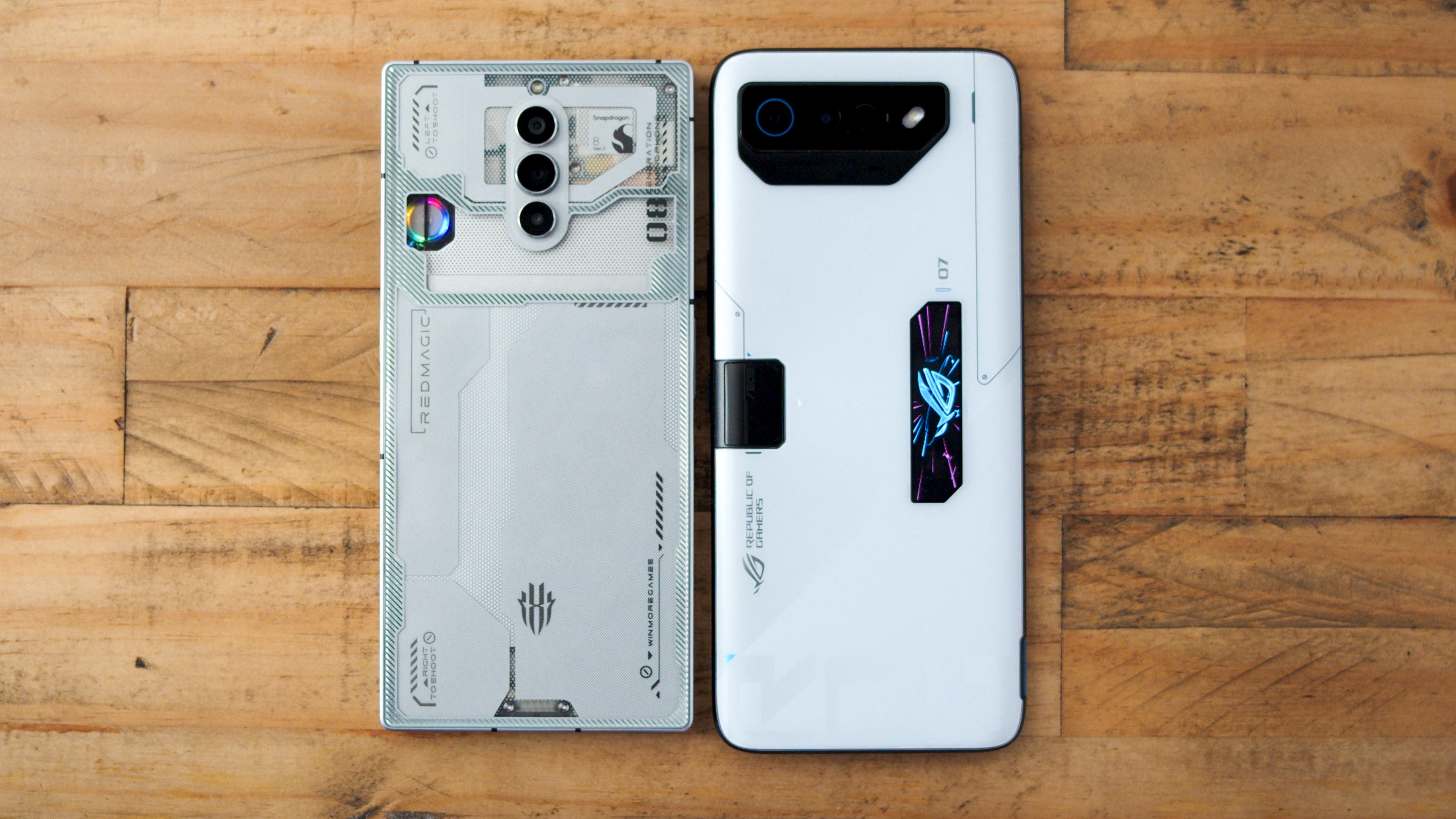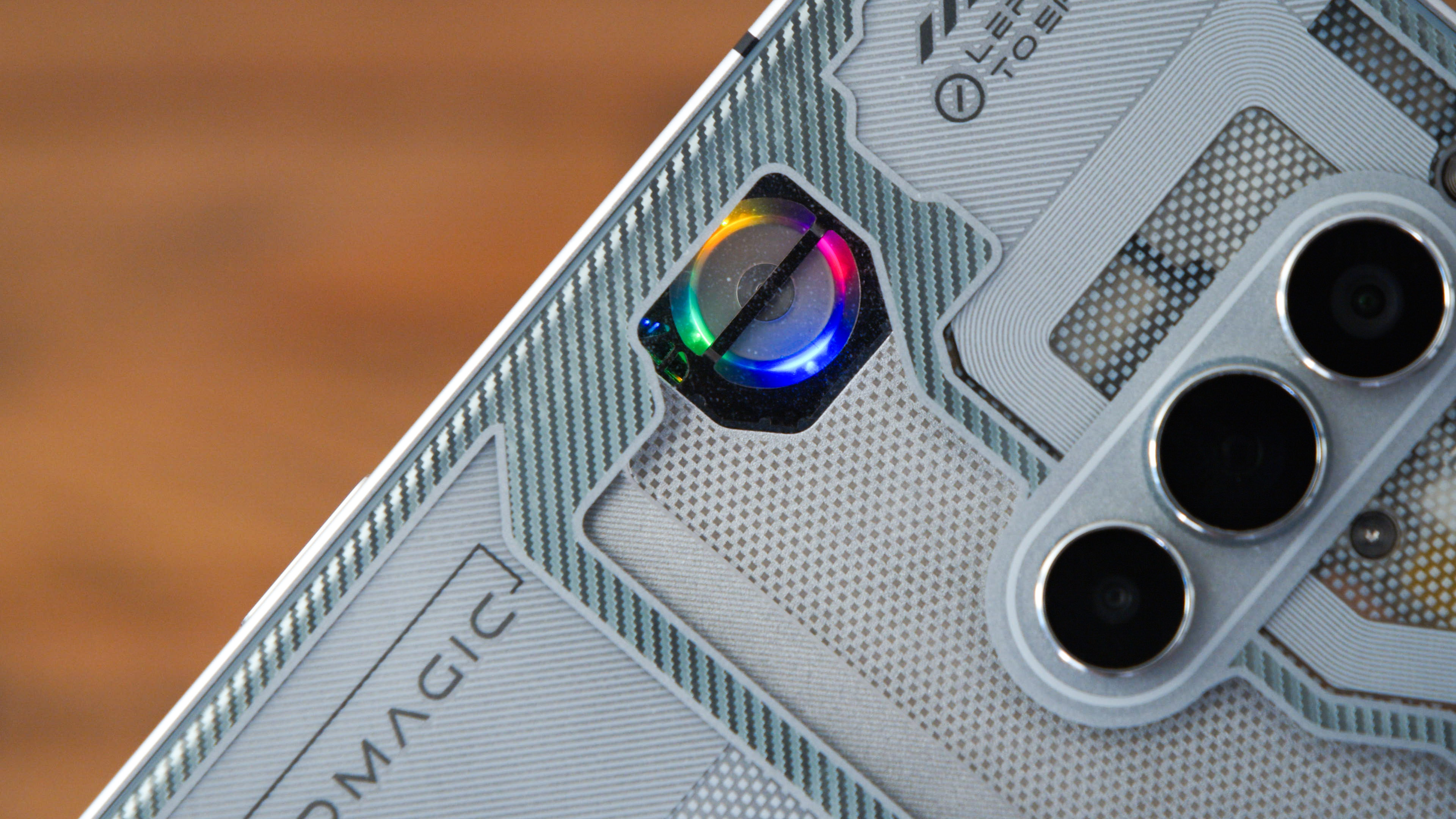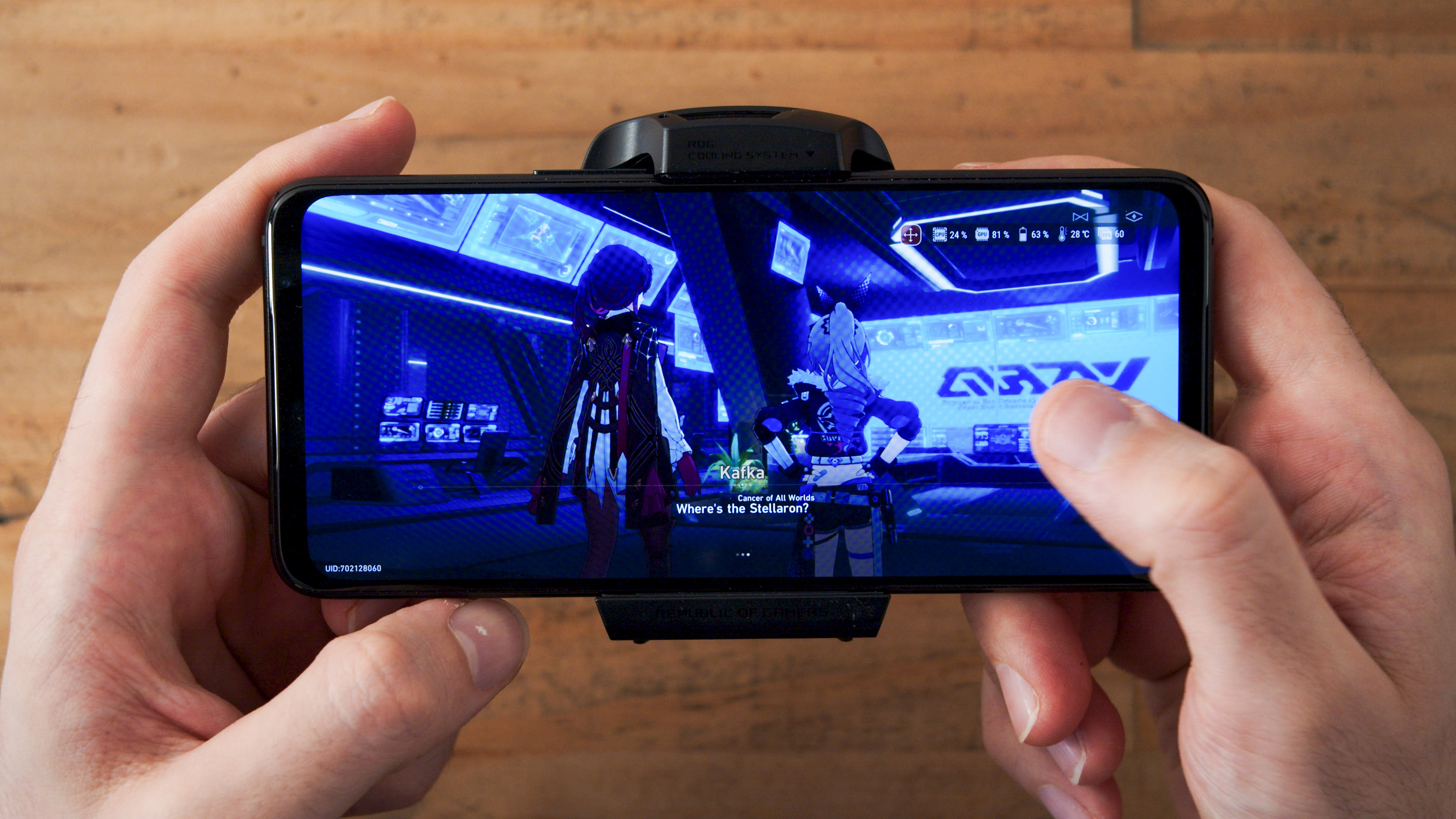

It’s 2023, you love gaming and you want to buy a gaming phone. Of course, you could look at a hundred and one reviews, check our best gaming phone guide, go down a Reddit rabbit hole... or you could just read this, buy one of two fantastic powerhouse handsets and get ready for lift-off.
The key reason there are really just two flagship gaming phone options you should be considering right now is that they’re the only ones loaded up with the latest 2023 hardware, able to tear through the most demanding games without giving you heat issues like last year's alternatives, including the toasty BlackShark 5 Pro and the Poco F4 GT.

The first option is for anyone who wants to spend less than £1,000, and it’s the excellent RedMagic 8 Pro, starting at a confusingly low £579. This is more than just a thoughtless slab with incredible gaming grunt – it’s a showcase in design and screen excellence – and in its pricier Titanium version it looks breathtaking.
If your budget can climb over that £1,000 mark, then the Asus ROG Phone 7 series is a more refined package that isn’t only the best gaming phone out now, but it’s also the best-sounding phone too.
1. RedMagic 8 Pro
The RedMagic 8 Pro is one of the best-looking phones on the gaming scene.
For starters, there’s that super-confident, boxy styling. Rectangles just don’t go out of fashion, so it’s little wonder this phone’s clean corners, flat sides, back and front, strike a classical note. But what really sets the RedMagic 8 Pro apart is the way its gaming flourishes are showcased without being totally over-the-top.
In its entry-level configuration, the 8 Pro’s back is a demure, matte black. If it wasn’t for a couple of glyphs, you wouldn’t be able to tell it was a gaming phone – just a stylish, large Android mobile.
Get all the latest news, reviews, deals and buying guides on gorgeous tech, home and active products from the T3 experts

Spec up to the £709 maxed-out version, and things get more in your face. You can choose either Void (black) or Titanium (silver/white – pictured above), with both switching out the matte back panel for a transparent piece of glass. The Titanium version we tested looks mesmerising, especially when you fire up a game, and the peek-a-boo RGB-lit fan under the back panel shines.
Yes, this phone has a fan inside it – so when you’re gaming it starts whirring away, cooling down the CPU and keeping the frame rate in check. But believe it or not the light-up fan isn’t the RedMagic 8 Pro’s design highlight – it’s actually the screen.
With a nearly edge-to-edge, massive 6.8-inch panel, the RedMagic 8 Pro’s front is captivating. Set against any other of the best Android phones from this year, it also stands out because it doesn’t have a notch or a punch-hole for the selfie camera.
The RedMagic 8 Pro is one of the only phones packing an under-display front camera, invisible to the naked eye and hidden behind the screen. And while we’ve seen examples of this tech in Samsung’s Galaxy Z Fold 4, RedMagic's implementation is much better.
What also helps the 8 Pro’s screen shine is its quality – the massive HDR AMOLED panel looks beautifully zingy and smooth with its 120Hz refresh rate.

Toggle the slider on the RedMagic 8 Pro’s side to take you into a gaming space. This flips the screen from portrait to landscape orientation and collects your games in one place along a horizontally scrolling carousel.
When holding the phone sideways, under each index finger are touch-sensitive shoulder buttons, and RedMagic also loads the phone up with in-game customisations, so you can assign keys if using a gamepad, set macros rather than inputting a chain of commands, or see current device stats.
Add to the mix booming stereo speakers that show up tinny, pricier, less powerful competition like the Google Pixel 7 Pro, plus that one-to-two-day battery life courtesy of the massive 6000mAh cell inside, and the highlights just keep coming.
So even if you’ve never considered a gaming phone before, the fantastic RedMagic 8 Pro should be blipping your radar based on its value for money alone. Its main downsides are its mediocre cameras and a few unpolished UI elements, but if you can get past those, then this is your lowest-cost way to get the latest gaming phone hardware in a great-looking package.
2. Asus ROG Phone 7 (Ultimate)
At any given time over the last five years, if you’ve wanted to pick up the best gaming phone around, it would have been the latest-gen Asus ROG Phone.
Never the most affordable, Asus charges flagship prices, but it also crams every mobile gaming feature you could ask for into its fine-looking phone line – and plenty you’ll probably never use too.

THe Asus ROG Phone 7 in black (left) and white (right), and the ROG Phone 7 Ultimage with its rear display (centre)
Flip the ROG Phone 7 Ultimate around, and on top of a seriously fresh, pearlesque two-tone colour scheme and some trademark gamer phone glyphs, there’s a second screen around the back. Pick a system theme and this mini-display beams with matching visuals that also correspond with your gameplay.
When you’re not gaming, the second screen displays handy information like notifications, so it isn’t a complete indulgence.
Back to the main screen, and with its ridiculously smooth 165Hz refresh rate, elements glide across it like grease on a frying pan, and its beaming AMOLED screen makes sure content looks vibrant, deep and inky, while games pop with zing across the super widescreen canvas.
While the Asus ROG Phone 7 Ultimate doesn’t have a fan nested within, it does ship with one that clips on. Better still, this fan is pretty much a fridge, complete with a cooling element as well as blades that keep thermals in check.
Asus has also installed a mechanical air vent that opens up to funnel cool air directly to the CPU, preventing heat build-up at the source rather than generally fanning the back of the phone.



More than just a cooling system, Asus’s fan – the Aeroactive Cooler 7 – is also a subwoofer for your ROG Phone 7’s mighty speaker set, tuned by Dirac Audio.
In a test across 10 of the latest smartphones including the iPhone 14 Pro and the Samsung Galaxy S23 Ultra, I found the ROG Phone 7 Ultimate’s speakers bested the rest when it came to quality. So with the addition of its clip-on bass boomer, the phone really could step in for your Bluetooth speaker in a pinch.
At £1,199, there’s no getting around the fact the ROG Phone is very expensive, but on top of all its other features, it also delivers the best performance of any Android phone we’ve tested in benchmarks. And we haven't even mentioned that super-fast UFS 4.0 storage, the phone's massive 6000mAh battery, IP54 water and dust resistance, and a super-slick, refined interface.

If you don’t want the ROG Phone to behave like a gaming phone, you can even change the system to look like a nearly stock version of Android. Almost everything about the phone's experience is highly customisable and polished, and it only really has one chink in its armour – a mediocre camera system.
Which gaming phone should I buy?
All this is why, if you want a gaming phone, RedMagic and Asus are your best options.
The excellent RedMagic 8 Pro in Matte (256GB) is the lowest-cost way to bag yourself a mighty Qualcomm Snapdragon 8 Gen 2 chip, not to mention one of the most striking screens on the scene.
Climb up the price ladder and you can double the storage by picking up a Titanium or Void RedMagic 8 Pro (512GB), while also adding some RGB and extra RAM to the mix.

If you have more cash to splash, the vanilla Asus ROG Phone 7 also has a massive 512GB super-fast UFS 4.0 storage, superior speakers and a more polished interface, though no vent for direct CPU-cooling.
If you can stump up the big bucks, then the ROG Phone 7 Ultimate sports that screen on the back, has an Aeroactive Portal, and ships with an Aeroactive Cooler 7 for out-of-the-box frosty gaming and clip-on subwoofer sound.
If you love the sound of a gaming phone but prioritise camera performance over gaming grunt, check out our guide to the best smartphones, and if all of Asus and RedMagic’s phones are out of your price range, have a look at some of the best cheap smartphones out now.

Basil has been writing about tech for over 12 years, with bylines in TechRadar, Metro, Wired, and Digital Camera World – to name but a few titles. He expertly covers everything from mobile phones to smart devices, cameras, audio-visual hardware, and kitchen tech. In addition to his extensive journalism experience, Basil is also skilled in video production, content strategy, and vegan baking, and runs Tech[edit], a technology-focused YouTube channel.